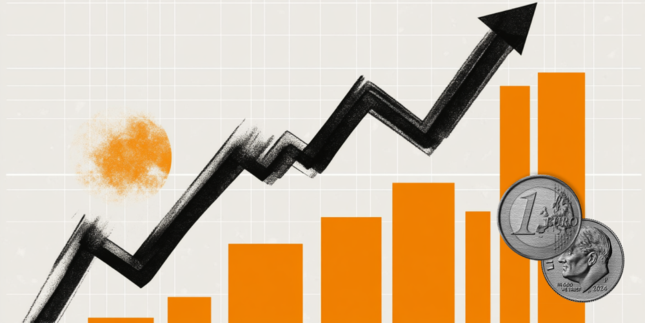Traders should take steps, prior to embarking on every trade, to limit the impact that an unprofitable trade could have on their capital.
Protect your capital
Traders should take steps, prior to embarking on every trade, to limit the impact that an unprofitable trade could have on their capital. For any trader their capital is their life blood and therefore should be protected as a priority. Without it they are not only unable to make money but are unable to trade. Therefore limiting risk, even if this means elongating the time taken to achieve ones targets, is a must. The key tools that can be used to do this are Stop Losses and Limiting Exposure.
Stop losses should always be used and never moved away from the market A stop loss should always be used and just as importantly should be used correctly. The golden rule of Stop Losses is that they should never be moved away from the market once the trade is opened. If a trader feels that their stop loss is incorrectly placed, they are recognising that the foundations of their trade are incorrect and therefore they should close out. The best way to place a stop loss is to take the mindset of ‘If this stop loss is touched, I have judged the market wrongly and I should close out’. Once closed out, the trader can always re-evaluate the situation and go back into the market if the market conditions are favourable.
Limit exposure
Limiting exposure simply means limit the percentage of your capital that is exposed both to one sector and to the market as a whole at any one time. This will usually mean limiting your exposure to approximately 5% of capital. The theory behind this is that, should the market go against you in all your positions on the same day, you will still be able to trade in the same manner as before.
Never average down
Every trade should have a well thought out structure in regards to entry and exit. A trader should never average down. Averaging down is a method used to try and double up on a losing position in an effort to lower the average entry price obtained during a losing move.
This is not the same as averaging in, which involves entering the market slightly early with half of the position size in order to take ensure that ,should the market bounce prematurely, the trading opportunity is not lost.
Let profits run and cut losses short Stop losses should never be moved away from the market. Be disciplined with yourself, when your stop loss level is touched, get out. If a trade is proving profitable, don’t be afraid to track the market. Theoretically a trade should never be simply closed out manually; it should always be closed out by a stop loss. This allows the trader to lock in profit but never prevent further profit from being made.
Employ a risk reward ratio
The use of a minimum risk: reward ratio when planning a trade is imperative. The actual ratio that traders use will vary depending on their experience. A typical Risk: Reward ratio that a trader might look for when assessing a trade is 1:3 or £/$ 1 of potential loss in the trade for every £/$ 3 of potential profit. Even if you are trading on a moving average crossover or another imprecise method, you should still be aware of what your potential losses are and what your potential reward could be.
Never stop learning
A trader should never stop learning. As the markets are dynamic and are constantly evolving, any trader that becomes stagnant will eventually start to lose money.
Never trade scared
Trading scared or undercapitalised is one of the leading causes of unnecessary losses. Emotions such as greed and fear often cause errors in judgement and are always present however they are heightened when trading under pressure.
Don’t be afraid to go home
No trader should ever be hesitant to stop trading and if necessary walk away for the day. A morning losing streak is more often than not compounded by the trader that continues to trade. By walking away, you are not being lazy, but being mindful of the fact that something is wrong that day and that you are not in tune with the markets. Walking away is nothing to be ashamed of. Come back fresh the next day.
Plan your trade and trade your plan
All trades should be planned with risk, reward and capital allowances taken into account. Any trade that is taken on the fly is nothing more than a gamble.
Don’t look too hard for your trades, wait for the good ones to come to you
There are so many markets to trade that there are endless supplies of really good quality high probability trades. If you are looking too hard for trades, you will end up moving into positions which you have falsely convinced yourself are high probability trades. The better a trade, the more it will jump out of the charts at you.
Every loss is a learning opportunity, take time out to take advantage of it
Every loss making trade is a learning opportunity. By definition, if you have made a loss, you have misjudged the market. Therefore to move on to the next trade without fully reviewing the last will only increase the likelihood that you will repeat the mistake.
Don’t trade blindly from others trade ideas
Traders new to the markets frequently place trades based on others recommendations. Any trading activity should always be researched in depth. Not doing so will prevent the trader from being able to react to any changes in the market during the life of a trade. Remember positive information being released about the market can still have a detrimental effect on price and anything that you read in the papers is old news, as professional traders will have heard about it and reacted accordingly the previous day.
All information on this website and hosted events are only for educational purposes and are not intended to provide financial advice. Any statements about profits or income, expressed or implied, do not represent a guarantee. Your actual trading may result in losses as no trading system is guaranteed. You accept full responsibilities for your own actions, trades, profit or loss, and agree to hold the Master Trading Strategies team and any authorized distributors of this information harmless in any and all ways. Past performance of a security, market, sector or any other financial product does not guarantee future results. All investments involve risks including losses that may exceed the principal invested. The use of this website constitutes acceptance of our user agreement.
Editors’ Picks

EUR/USD stabilizes above 1.1350 on Easter Friday
EUR/USD enters a consolidation phase above 1.1350 on Friday as the trading action remains subdued, with major markets remaining closed in observance of the Easter Holiday. On Thursday, the European Central Bank (ECB) announced it cut key rates by 25 bps, as expected.

GBP/USD fluctuates below 1.3300, looks to post weekly gains
After setting a new multi-month high near 1.3300 earlier in the week, GBP/USD trades in a narrow band at around 1.32700 on Friday and remains on track to end the week in positive territory. Markets turn quiet on Friday as trading conditions thin out on Easter Holiday.

Gold ends week with impressive gains above $3,300
Gold retreated slightly from the all-time high it touched at $3,357 early Thursday but still gained more than 2% for the week after settling at $3,327. The uncertainty surrounding US-China trade relations caused markets to adopt a cautious stance, boosting safe-haven demand for Gold.

How SEC-Ripple case and ETF prospects could shape XRP’s future
Ripple consolidated above the pivotal $2.00 level while trading at $2.05 at the time of writing on Friday, reflecting neutral sentiment across the crypto market.

Future-proofing portfolios: A playbook for tariff and recession risks
It does seem like we will be talking tariffs for a while. And if tariffs stay — in some shape or form — even after negotiations, we’ll likely be talking about recession too. Higher input costs, persistent inflation, and tighter monetary policy are already weighing on global growth.
RECOMMENDED LESSONS
Making money in forex is easy if you know how the bankers trade!
Discover how to make money in forex is easy if you know how the bankers trade!
5 Forex News Events You Need To Know
In the fast moving world of currency markets, it is extremely important for new traders to know the list of important forex news...
Top 10 Chart Patterns Every Trader Should Know
Chart patterns are one of the most effective trading tools for a trader. They are pure price-action, and form on the basis of underlying buying and...
7 Ways to Avoid Forex Scams
The forex industry is recently seeing more and more scams. Here are 7 ways to avoid losing your money in such scams: Forex scams are becoming frequent. Michael Greenberg reports on luxurious expenses, including a submarine bought from the money taken from forex traders. Here’s another report of a forex fraud. So, how can we avoid falling in such forex scams?
What Are the 10 Fatal Mistakes Traders Make
Trading is exciting. Trading is hard. Trading is extremely hard. Some say that it takes more than 10,000 hours to master. Others believe that trading is the way to quick riches. They might be both wrong. What is important to know that no matter how experienced you are, mistakes will be part of the trading process.

The Best brokers to trade EUR/USD
SPONSORED Discover the top brokers for trading EUR/USD in 2025. Our list features brokers with competitive spreads, fast execution, and powerful platforms. Whether you're a beginner or an expert, find the right partner to navigate the dynamic Forex market.
